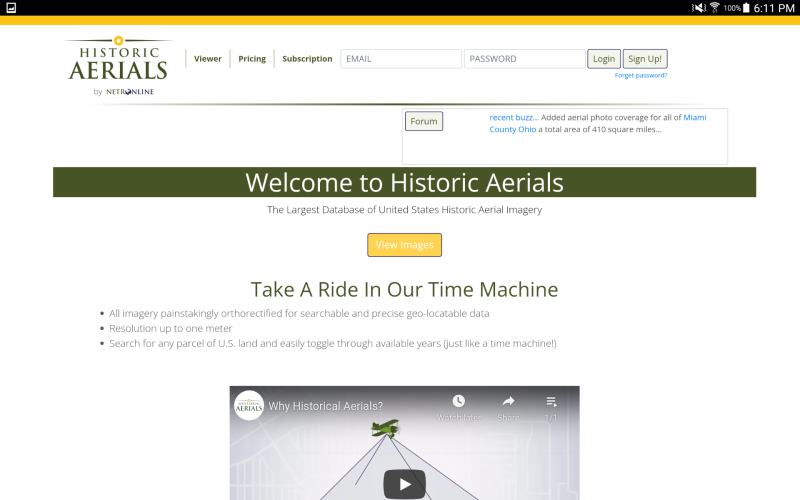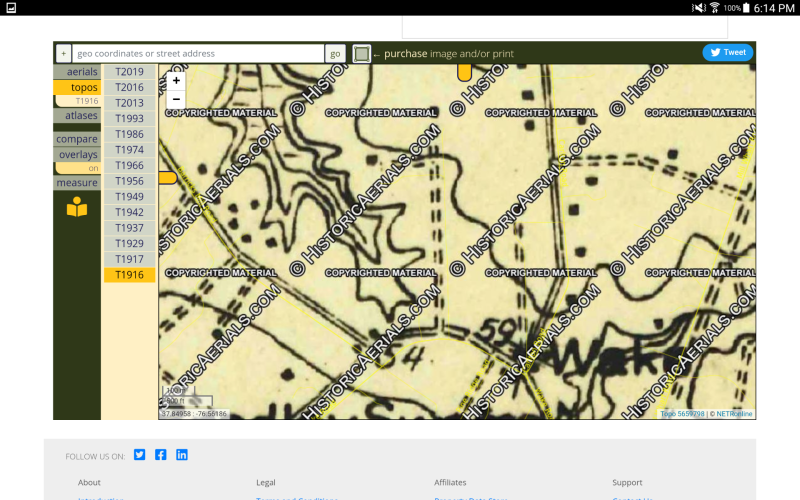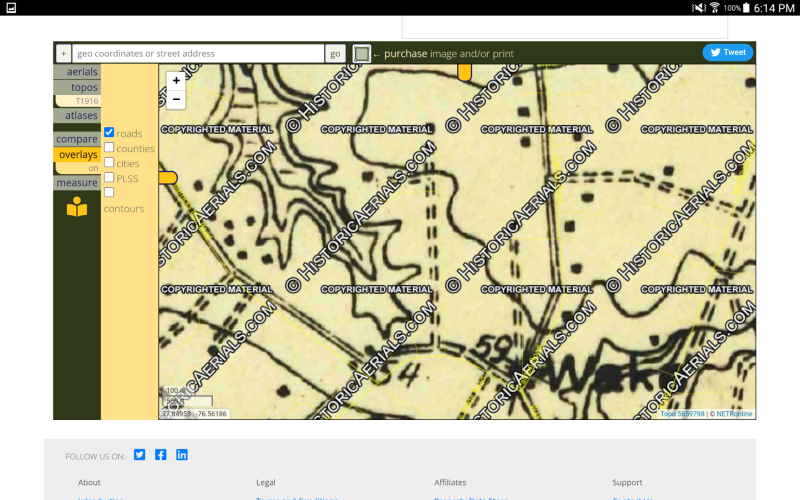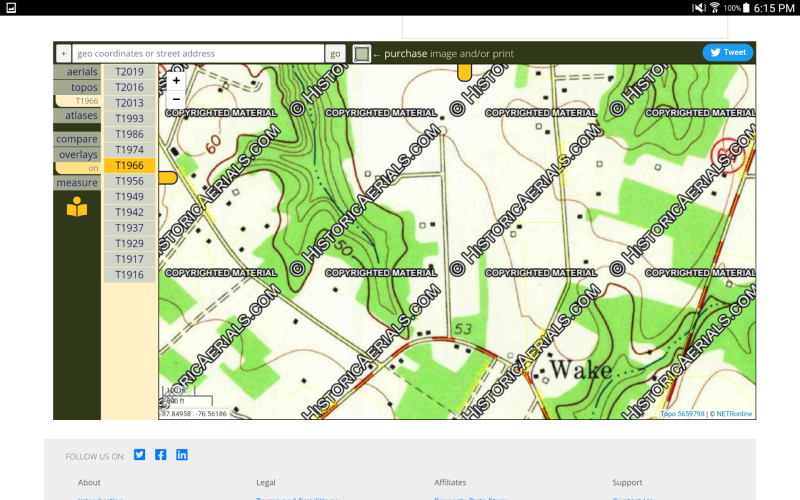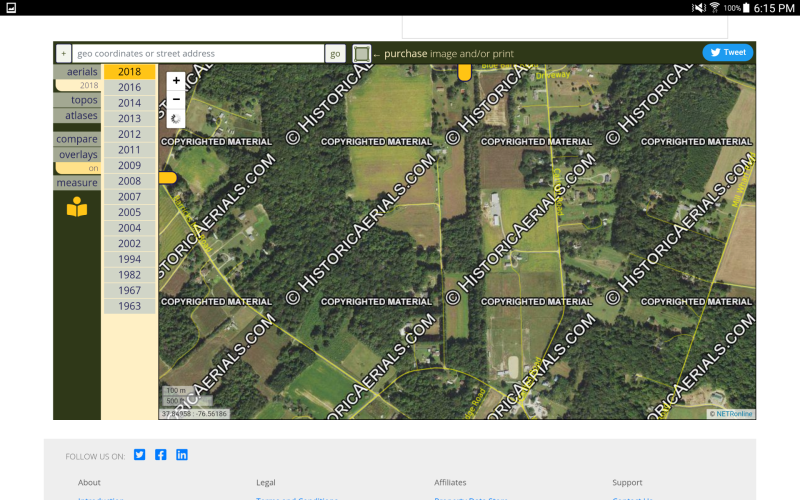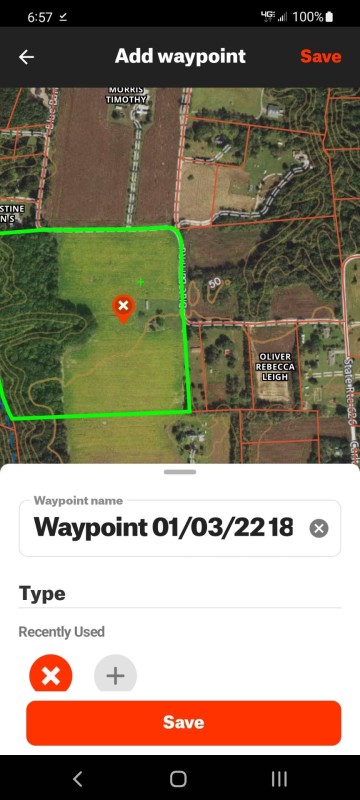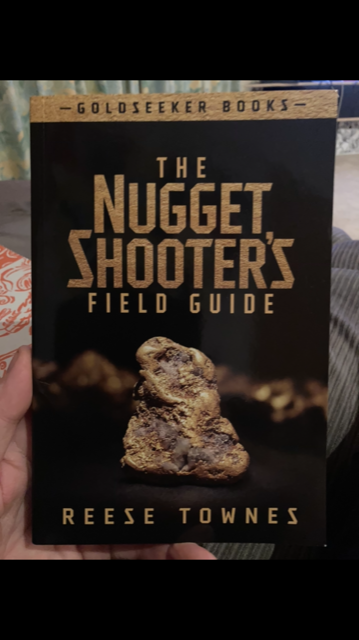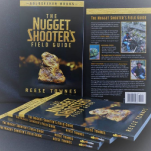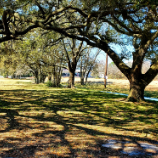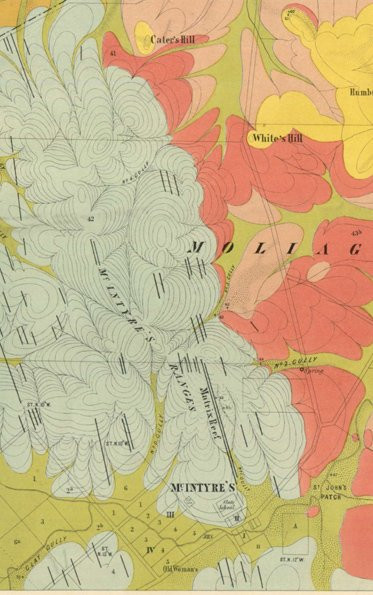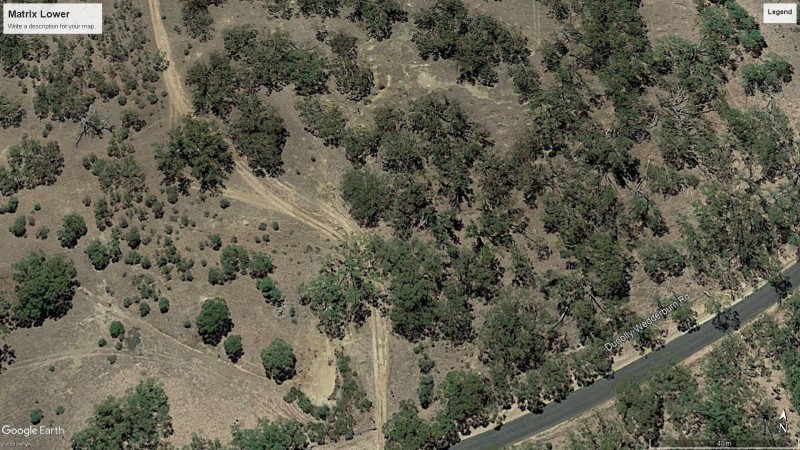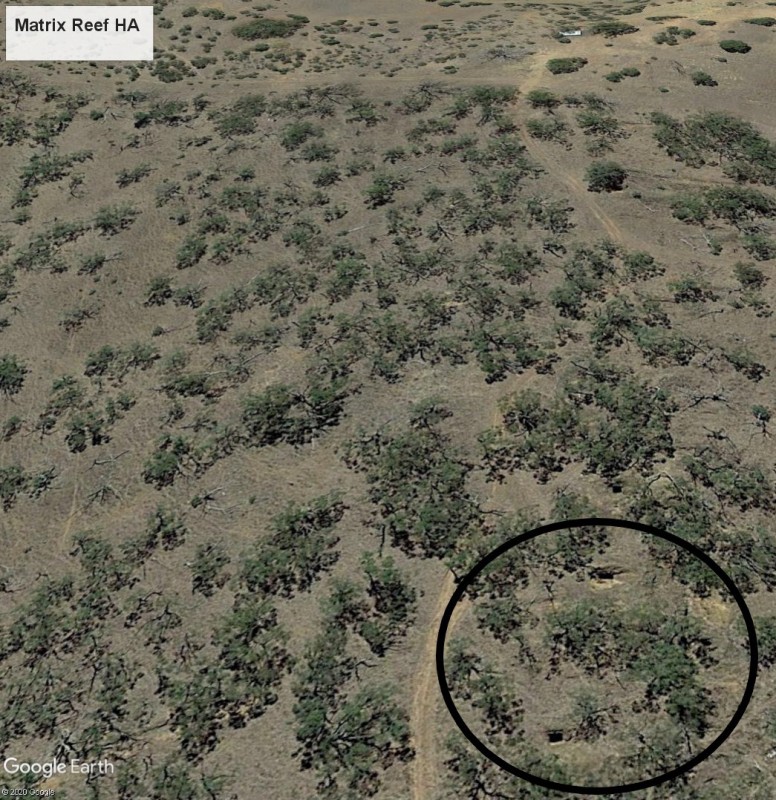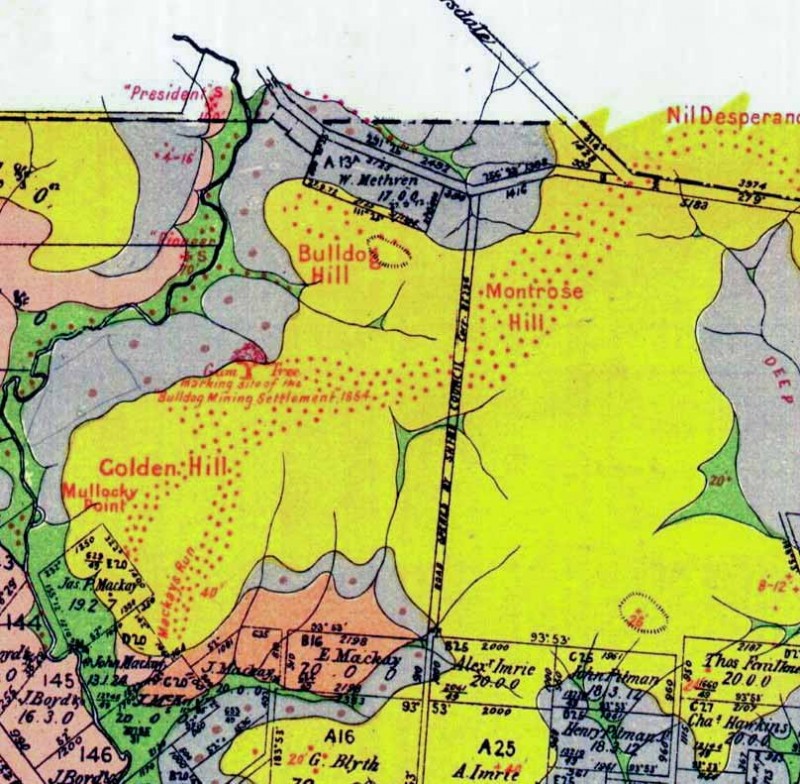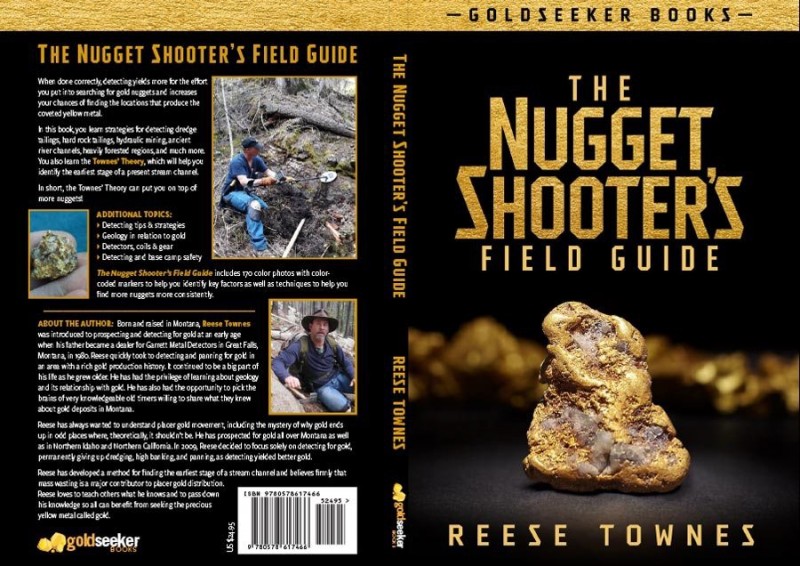Search the Community
Showing results for tags 'research'.
-
I'm a detecting newbie and that excuse is worth maybe a bowl of soup and a hat going forward. I've been binge watching videos the last few days and I'm beginning to think my ancient DFX 300 has a few miles left on it after all. There's a boatload of information available on my detectors and reading it leaves me starry eyed after a bit but.....DUH...they wrote those manuals for a reason! I am publicly stating that I am ashamed and embarrased that I have wasted so much time in the field just turning on the detector running and swining it. If I found anything it was dumb luck ( such as my Majuba meteorite. After watching a number of "how to ground balance your detector" video it's been a real eye opener. Jeez....there are a lot of smart guys out there who have a lot of knowledge to share. So today I headed out back and laid out a practice grid of coins and gold finds and really tuned my Gold Bug 2 correctly. I feel like the kid in school that finally understands Algebra. My practice area gave me te opportunity to listen and be able to hear the small differences in tone. Like a dork....I found myself closing my eyes and wondering through the maze. NOT recommended. It made a difference to be able to distinguish the tones my detector produces. . Maybe just maybe my upcoming run to the claim at Rye Patch will justify the expense of my new detector. This isn't news to most of you Im sure but dang....I feel good and the blue skies are clear now and I can hear the nugget birds singing.
-
I'm snowed in for the next couple of days and have other stuff to do. While I'm bored to death I thought I'd show how easy it is once you have a permission to locate buildings using Historic Aerials - I hope they never charge for this or go offline. I used an area that is not one of mine, sorry. 😁 Let's say you have permission to hunt an old farm. You go to the website http://www.historicaerials.com, click or tap on "View images". If you have a GPS-enabled device, you can accept the website using your location. Next, locate the farm you have permission to by moving the base map around, and then click or tap the Topos button, it will bring up a list of all topographic maps for that area. I selected the 1916 map for this farm in the center. Next you tap overlays and select roads, which will superimpose the basemap roads on the topo, a great tool if the roads have moved or changed. It isn't perfectly accurate most times, but it's pretty good. Next click the Topos button again, this is where I will pick a late one to see if buildings have been added or deleted, I switch back and forth. After the 1980s they stopped putting squares where houses were, so there's that. 😵 This is the 1966 topo of the same area, you can look around and switch back and forth to see if anything changed. Once you have a pretty good idea of where the buildings or areas you want are, you can bring up the latest satellite map of the area, which you can use to match features on an app like OnX Hunt. I make marks of all the buildings, and specific features in the app. It makes it much easier to find stuff! You can walk right to them and track your hunting. OnX Hunt will show property lines, owner information, and topographic info if you pay the ransom for your state. Hope you find this interesting if you've never heard of it. 🙂
-
My 2021 New Years Resolution (and I think my 2020 one, too) was to find sites I hadn't previously searched rather than to put all my eggs on cleaning up what's left of familiar sites. (I still do some of that, too, though). This year I've already reported on four previously unsearched (by me, that is) sites, all which have produced. More on those in my year end summary in a month. Early in November I decided to make one more try for 2021 at finding some new ground and with the help of HistoricAerials.com, I found four promising locations. I'm going to simply refer to them as sites 0, 1, 2, and 3. Site 0 is the easiest to report on. From early 20th Century USGS topos it was a small (one room?) school that disappeared around 1950. A drive by showed that not only is it now a private home, but that the intersection where it was located has been seriously reworked, i.e. enlargened. At best it falls into the 'private permission' category and I'm not at all good at those. Site 1, with added help from Google searching, was an elementary school and high school back at least to the eary 30's. The HS closed in the mid 60's and the elementary school a few years later. The building is still there but there are mixed signals as to whether it's public or private. Some threatening signs indicated at least part of it is currently privately leased, but the a__holes are very vague about what is and isn't theirs. I spent 1 1/2 hours in a couple spots with promising results (see photo of good finds below) but I just didn't feel comfortable. There was a lot of coming and going by various groups (sports participants, church goers, etc.) and although no one bothered me I just didn't feel welcome. Site 2 was another small elementary school. I don't know when it was formed but it appears to also go back to early in the 20th Century. I think it closed around 1960. It's now a small public park and community center. Unfortunately both my visual (internet) research as well as detecting and viewing the site in person makes me think it's been heavily reworked since the school was torn down. First hunt there, 3 1/2 hours, produced 2 Wheaties and a sterling ring, plus a fair amount of modern coins and trash. That was my survey hunt. My second trip there was intended to focus in on a trashy but potentially less overfilled part with the ML Equinox and 6" coil, but that wasn't very fruitful. About 2 hours in I was approached by an elderly (81 year old) friendly neighbor who filled me in on some history. He said he had attended that school as a youngster (presumably around 1950) and told me that although several detectorists had been there before me, as far as he knew they had never searched a slope near one edge of the property where he said he used to play and that bulldozers hadn't bothered. Now that's the kind of info I like to hear! I thanked him and headed over there. For now I'll leave it at that and tell more in the show-and-tell portion of this post. He twice more returned and told me of some other nearby sites I should search but they all sounded like private properties. Site 3 is an active, modern elementary school which replaced an early one built around 1955. I was able to go there during their Thanksgiving recess. Unfortunately this site has been heavily reworked since the original school was razed and it also feels like it's been rather thoroughly searched. In 7 1/2 hours (two days) of hunting I only found 2 Wheats plus one other oldie (more on that shortly). OK, here is the eye candy you've been waiting for: Top two items are from Site 1 -- 1983-D nickel-clad half dollar (only my second ever) and a necklace chain and pendant which was clean but unfortunately apparently (magnetic) nickel plated copper. Both were reasonably shallow but not on the surface. Based upon these finds I don't think this part of this site has seen detectors in 2 or 3 decades. Now the finds are in pairs from lower left. Site 2 produced this sterling ring with stones (don't know if real, but they look nice to my eye, and especially to my wife who has already claimed it!). Thanks to that 81 year old former student I found the 1899 Indian Head Penny on the virgin slope where he used to play. Turns out the EMI was so bad I had to use 4 kHz on the ML Equinox and its dTID rang up in the high 20's (silver coin zone), not 20-ish where they show up in MultiFrequency. It was only about 4 inches deep. Next two (silver alloy 'Warnick' and broken piece of jewelry) were found at Site 3, showing that there are a few spots which haven't been backfilled. The broken piece showed up in the USA nickel zone (dTID 12-13 on the Equinox) and given its size I think this is high conductive composition. Both ends show that they were broken off something larger (bracelet?) and the fact there is zero copper coloring there makes me think this could be a silver alloy. Finally, the last two items on the right were found this past week in my bread-and-butter 2021 site, the 'Wheatfield', not one of these four recently reserached sites. The ring has a men's wedding band shape but is marked '925' so sterling. (My wife has claimed it, too.) The IHP is a 1901. In my two times searching there last week I found 5 Wheat pennies each day (3 hour hunts per day). I expect to spend my last few hunts this year at that site. I'm sure there are more oldies and I'm shooting for a record year (quantity) of Wheat penny finds. I only need 5 more to tie last year's 103. The above picture is the 'good'. Here are the 'bad' -- interesting (?) non-coin finds from these four sites: And if you want to see 'ugly', you'll have to await a future post.
- 10 replies
-
- stories trips adventures
- coin detecting
-
(and 1 more)
Tagged with:
-
Almost 5Gb of finds catalogues like coins, seals, buckles and other relics. 2GB English language. Free to use on my personal server: [omnitron.pl]
-
It seems one of my recurring detecting New Year's Resolutions has been to find new hunting grounds and not get stuck in a rut trying to find the last crumbs I'm capable of tasting in the sites I've detected extensively. So far this year I've done well (at least one silver coin in each) at three 'new' sites (two parks and one school) and 3 weeks ago before heading out East I was able to get in a short 1 hour hunt at another park I've never previously visited. I vaguely knew about this spot previously but for various reasons I never tried it. My first 'requirement' is that a new (to me) site have a decent chance of hiding old coins. For the most part that means having had significant human activity prior to 1970 and preferably prior to 1960. This 4th 'new' (to me) site of 2021 didn't seem to meet that minimal requirement. In fact there is a prominent bronze plaque on site which states it didn't become a park until 1974 and previously was an industrial storage lot for several decades. However, Historic Aerials hinted at a more promising past. It seemed to show that some of the modern park's features were present at least back to 1965. I'll go deeper into that later in this post. That first 1 hour hunt produced three Wheat pennies along with four copper (alloy) Memorial Cents and a couple clad dimes. Three Wheaties in an hour on a site which supposedly wasn't frequented until 1974 was surprising but far from earth shaking. I filed it away until after getting home from my week+ in the East. After getting home I needed some time to decompress (i.e. take care of other things) and it was quite humid besides. Further, this summer has been wetter than normal and the grass grows back as fast as it gets cut. Finally this past Thursday (2 days ago as I write) I got in 3 hours on a freshly mown park. I concentrated on areas that the Historic Aerials indicated would be most promising but still did some fairly broad surveying. The results were a bit disappointing compared to the previous short run -- 1 Wheat cent vs. 4 copper Memorials along with a few modern 5, 10, 25 cent coins. Here's a photo of only the coin finds (oh, plus a Sterling ring my wife has already claimed): The next day I returned for another 3 hours, this time hunting exclusively on what I considered the most promising part of this site. Now the floodgates started to open: 10 Wheaties compared to 5 copper Memorials along with $1.85 in larger denomination modern coins: The dates on the 10 Wheaties are: 1909, 1918, 1920, 192x-D (haven't yet resolved that last digit), four from the 40's and two from the 50's. Non-cent finds don't seem to show any particular date pattern although only 2 or 3 are from the current millenium. Now for the non-coin finds from these last 2 days (total of 6 hours): Pretty much the typical park trash. There is one arcade token from 80's or later (right below five Stinkin' Zincolns). The ladies watch appears to be nothing special (no precious metal or stones). Possibly most interesting is above the drink can lid -- it's a copper piece that looks like it has a coin slot in it. The padlock is badly corroded and the shank has been cut with a hacksaw. It may be from this site's industrial days. Oh, one last interesting find. To the right of the Hot Wheels car is a wooden piece I recognize as being from a Lincoln Logs wooden playset (not metallic)! So what explains the plethora of Wheat Cents? Here are some hypotheses: 1) The bronze plaque is wrong and the property was turned into a park well before 1974. This seems a bit odd -- I mean the park department historian can't get a date right and spends hundred+ dollars on a sign with erroneous information? 2) The industrial site's employees spent some of their lunch-hours in the same shady(?) sloped spot, either accidentally dropping coins or even possibly playing some kind of penny-ante game tossing them and missing picking up some? 3) Nature's randomness is conspiring to try and trick me into thinking this site's Wheats/Memorials ratio is indicative of something other than just luck. The plausibility of this last hypothesis can be tested with statistics. I'll start with my on-going 5 year record of fraction of copper Lincolns that are Wheats. That's 338/1547 = 21.58%. Most of these have come from parks and schools, all of those sites having been established no earlier than 1974 while most of the remaining sites were private permission homesites that were established no later than 1960. Thus using this value as 'typical' for sites frequented for at least 47 years is a stricter requirement than necessary. Still, using 21.58% ratio of Wheats to total coppers, the chance that of the first 27 copper alloy Lincolns found, 14 or more would be Wheats is less than one in 7100. Of course Wheats tend to be an indicator that even better (yes, silver coins) treasures are hidden and awaiting a coil to be swung over them. Hopefully I can add some more evidence by digging one (or more) of those on my next trip to this spot.
-
You have basically four books on the Equinox metal detector to choose from. 1) The Minelab Equinox 600 800 Metal Detector Hand book by Andy Sabisch $23.95 - 176 pages 2) Minelab The Equinox Series from Beginner to Advanced by Clive Clynik $19.95 - 111 pages 3) The Minelab Equinox: “an Advanced Guide by Clive Clynik $22.95 - 101 pages 4) Skill Building with The Minelab Equinox by Clive Clynik $21.95 - 119 pages There may be more, but these are the ones I actually purchased. I have no relationship with either author other than some email questions. I also run two very technical book review web sites on college level books and above. Andy’s book is well edited, with slick photographs and a large easy to read format with some general information on the Equinox detector. However, in my opinion it is padded with photos and testimonials that really don’t add much to the Equinox knowledge. Clive’s books are more expensive if you buy all three of them. Smaller format and yes, there are some spelling mistakes Clive did not catch. But, for the amount of pure Equinox knowledge (especially for the 800), these books are packed from cover to cover with very useful Equinox information. I find myself highlighting quite a bit in each of Clive’s books. I have many years of metal detecting experience with various metal detectors under my belt. Nothing prepared me for the 800. My previous detector was the very good Garrett AT Pro. Prior to the Equinox, I feel the AT Pro was the best mid-range metal detector available. That all changed in the Spring of 2018 when detectorists started buying the 800. Most people at that time could not or refused to believe the 800 was as good as Minelab and a few others were saying. Big caveat here, this was not your father’s detector. It is a very powerful and complex mid-ranged metal detector. Until you tame it, you will be frustrated unless you learn to just use it as the Minelab engineers designed it and that is to use the standard modes until you have at least 50 hours on the 800 or 600. And that brings me to Clive’s three books. They will show you how to get the most out of your equinox. If you are content with hunting in the standard modes maybe buying just Clive’s first book. Bottom line, I kept all three of Clive’s books and sold Andy’s book. But the safe choice would be to purchase all four books.
-
A recent thread and one of the responses got me thinking on a related topic (related to the response, not the original post question). I quote part of Steve H.'s response (referring specifically to finding natural gold in the Contintental USA): The best gold was gone a decade ago, and the leftovers have been hit hard the last ten years. That got me thinking about coin and relic detecting. Good detectors for that purpose have been around at least as long as those for natural gold detecting. Although there are many more locations for coins and relics, and those on average are more accessible, there are certainly more detectorists searching them. So should we arrive at the same conclusion? One argument I don't buy (although it might apply to jewelry detecting, but even there modern problems exist and are growing) is that coins (in particular) are being reseeded. True, if all you are after is face value (spending money) coins. With the rare exception of very rare mint errors (double dies in particular), almost no coins have been minted for circulation in the last 65 years which carry a collector premium, and few coins minted for circulation contain sufficient bullion value to make melting them down worthwhile, even if you can get away with it.... So, no, there isn't a reseeding of coins of value. We C&R detectorists do have one major advantage over natural gold detectorists -- private 'permissions'. (Although there are private gold bearing properties and private gold claims on public properties that are accessible, those invariably involve considerable compensation to the property/claim owner for access and/or recovery.) How many unsearched private properties with promise for old coins and valuable relics are still accessible? Let's continue with unserached public properties such as public schools and public parks. How many of those still exist? Better asked, what percentage of those still exist? Final set of questions: as is true with gold bearing sites, the earlier detectorists didn't get it all, just the easiest to find and recover. How many old coins (and valuable relics) are contained in sites which have been detected? Do we have the tools today to identify and extract them? While I (hopefully) still have your attention, I'm mentioning a book which I don't think gets as much notice as many detecting books that do: How to Research for Treasure Hunting and Metal Detecting by Otto von Helsing (2013). It's ~200 pages of no-nonesense instruction on the topic. To drive home my 'no-nonesense' claim, here is something he says in his second paragraph (in the Introduction): The goal of this book is to teach the average person how to do good research to find promising leads for metal detecting. I don't care if you have gray hair on your head and hate computers or if you are 20-something and like to text while driving (In which case it's likely you won't make it to the gray-hair stage.) !!!!!!!!!!!!!!!! I'm just getting started and don't expect it to be a lazy read, so I can't yet give a review. But I like his attitude.
-
Hello, my father lives in SW Utah and I would love to take him nugget shooting somewhere. He is 100% disabled from Vietnam and he can use the shovel as a cane for a while and I am usually his “digger” and pinpointer guy 🙂 So I was hoping for some info on where I he and I could go nugget hunting, with my Orx in either Az or southern Utah, Nv. So we can plan a trip together (researching and reading will give him something to do) 🙂 He doesn’t have many years left where he can even get around on his own, so any input would be great, thanks in advance
-
A few months ago I suggested I was keen to get a copy of Reese's 'Nugget Shooter's Field Guide' but the shipping to Australia was a killer. Fellow forum member Chuck (aka Ridge Runner) took it upon himself to purchase a copy, reached out for my address and posted it to me. What followed was a comical travel itinerary of Chicago to Japan to Chicago to Sydney (actually in Australia!! 🤣) to Chicago to San Antonio to Chicago to Japan...and then for about the last 3 weeks...nothing 😳 I was starting to think that maybe it had travelled one leg too far and it had really lost its way. Until today, when it just turned up in the letterbox without any tracking notifications from within Australia. Who cares, it's here!! 🥳 🎉 So, thank you Chuck. Your kind gesture is truly appreciated. And thank you for providing your return address. I know you have asked nothing in return but my friend, when the right thing comes along that is commensurate to my appreciation it will most certainly be making its way to you. And thank you for the hand written note 😊 This is the second time in the past few months that several forum members (Chuck and a few from the Prospecting Australia site) have been very kind and giving. Information, helping and kindness are the great components of these forums and is something we can all aim for. Thanks again Chuck 🙏 Now, I've got some reading to do!!
-
As I continue my research into bucket dredge tailings areas I am trying to find maps showing at least the general locations of these tailings as they occur in various states. After many hours of internet research I have found environmental reports, state park reports, and scientific studies on individual sites. I have also found an old report for the state of Oregon with a page size map. However I have not yet found a comprehensive map of at least the general location of all dredge tailings for any of the individual western states (other than Oregon). Nor have I found a comprehensive map of all of the dredge tailings in the western U.S. Do such maps (or books for that matter) exist for either the states or the western U.S.? Just curious if I had missed something (maybe even the obvious) or if I was blessed with the opportunity to create such a document from scratch? Thanks in advance for your help and suggestions.
-
I have a friend in Shirley, Arkansas that says there is no gold over there. Anyone know different?
-
I’ve been curious about using the Bureau of Land Management’s MLRS site https://mlrs.blm.gov/s/ to figure out where to go detect on open lands in heavily claimed areas, and I’ve noticed that it does show some “active claims” on the maps highlighted with red crosshatching, but it doesn’t show “active claims” in other areas at all. It’s strange because the map key includes a code for active load and active placer claims, in addition to closed ones. I’ve heard that it’s because BLM hasn’t caught up on the records yet, but does anyone know why otherwise? I hope it becomes available because that would be a wonderful feature instead of having to get records from their offices.
-
Does anyone on here know how to navigate the new BLM MLRS claims database, and how to navigate and utilize the features on the map program? It is supposed to be alot easier than LR2000 which is gone now. Perhaps a video on here would be good for everyone. It is still confusing.
-
Just wondering what metal detecting destination might be on everyone's wish list (Either where you have always wanted to go, or where you would love to go again... or maybe both). For coins and relics, my bucket list destination would be England.. exact location to be determined by more research. I would love to return to Alaska... only this time armed with my detector... I was on business last time and didn't have the opportunity to detect. How about yours? ~Tim
-
Hello all, I recently saw someone state that they didn't fully understand why they sometimes get the urge to buy a certain detector! And for one reason or another, fail to pull the trigger, or asking the question of why not! I, like many here, have questioned why i would want to purchase; and have purchased, what would "technically" be an "inferior" detector! If there is such a thing; they all find stuff!! I think the reason's are as numerous as one can imagine! So i won't bore everyone with what i think their reasons are! I can only speak for myself! Probably my number one driving factor are places like this forum, and other sources for research! Once you really start to get the "bug" for detecting, you begin to understand that it can go beyond just finding treasures! In fact, my reading, and quest for information, far exceeds my actual detecting hours! Of course, there are also "real life" reasons that prevent me from getting out there as often as i would like! But instead of that being a negative; and me being bitter about it! I funnel that energy into trying to soak up more knowledge to make my actual detecting hours more productive! Many here will understand this! So, for those thay are unclear what that has to do with buying older, or less advanced detectors, i will explain! Like many, i detected a few years when i was young! Stopped for a career, and family; among other reasons! And got back to it, a few years before my retirement five years ago! Not being involved for all those years, i went with a new detector; among others i researched at the time! Now fast forward to today! I'm much more knowledgeable than seven years ago; detecting and theory wise, but have barely scratched the surface! I own several detectors for various functions! Some overlapping each other a bit in operation! A few others are just for fun, or for something i feel i missed, in my absent years! Other's were too good a deal to pass up! And I could get a good return for, if i chose to! So, to summarize! In my opinion, the longer your in it, the wider range of technology, legends, varations, etc... you are likely to buy, and try, for no very practical reason! Cost not withstanding; as you advance in this hobby! Or as some jokingly refer to it as a "sickness ", or "obsession "! 🤩 👍👍
- 7 replies
-
- research
- best detector
-
(and 1 more)
Tagged with:
-
I know they exist because i I found a 1.3 grain piece south of buffalo panning. I heard of a 1.6 gram piece found with dredge in the Finger lakes region.I talked to a geologist in Buffalo who was sifting glacier material in a certain spot and found a nugget big enough to have in his wallet.He did not have it with him at the time because he was just walking his dog.I did find a .5 grain piece with my AT gold checking all the material that was around my pan from all the cracks we had cleaned.I would have not got it if i did not have my machine since there was to much sand blocking it from view.I guess that could be counted a tailing pilings piece since I was competing with a buddy in all those cracks.
-
https://ucla.zoom.us/meeting/register/tJEqduyupj0vGd3S0_52FsbHTbPjYr0sZQUj Meeting Registration Facebook Twitter LinkedIn Microsoft (Outlook) Topic UCLA Meteorite Gallery Lecture Series Description Title: Clocks in Rocks: How to date a solar system Lecturer: Dr. Sara Russell; Natural History Museum, London Our solar system was born over four and a half billion years ago, from a cloud of dust and gas called the protoplanetary disk. Examples of the first solids to be formed - calcium-aluminium-rich inclusions (CAIs) and chondrules -have survived in some meteorite samples to learn about these ancient times. In particular, we can determine how old these components are using lead isotopes, which places constraints on the formation time of our Sun and planets. Finer details can be provided by the isotope 26Al, which is a natural clock because it is radioactive and its abundance declines by half every 3/4 of a million years. By looking at how much of this isotope was present in each object when it formed we can therefore tell how old it is. However, this chronometer depends on knowing how much 26Al originally existed in the disk and how it was distributed. If we can work these details out, then we can use these data to determine the length of time it took to make CAIs and chondrules, and from this we can work out how long the dusty disk took to start to form planets. Time Jan 17, 2021 02:30 PM Feb 21, 2021 02:30 PM Mar 21, 2021 02:30 PM Apr 18, 2021 02:30 PM May 16, 2021 02:30 PM Jun 20, 2021 02:30 PM Time shows in Pacific Time (US and Canada)
-
Because I am new to the nugget hunting experience, to use an analogy, I have decided to start building my fishing rod so that I can learn to fish and then find a lake in which to fish and, hopefully eventually find a fishing hole. To this end I continue to read the various threads on this and other forums. On this forum I have found several threads discussing popular nugget hunting books and Steve Herschbach’s list of free books in pdf format. To provide a starting point in the learning process I have constructed a list of (gold) nugget hunting references, as shown below. I recognize that some of these books are out of print and difficult to source. My question is this: what other nugget hunting related books would you recommend that I try to read or review? 1. Tom Bohmker a. Elusive pocket gold in southwest Oregon b. Finding pocket gold in California’s Klamath Mountains 2. Gold Rush Nuggets a. Metal Detecting for Gold 3. Pieter Heydelaar a. Successful Nugget Hunting, Vol. 1 4. Peter Heydelaar & David Johnson a. Advanced Nugget Hunting with the Fisher Gold Bug Metal Detector 5. Dave Johnson a. Gold Prospecting with a VLF Metal Detector 6. J. Klein a. Where to find gold in the desert. 7. James A. McCulloch a. Advanced Nugget Shooting; How to prospect for gold with a metal detector, Revised edition b. Advanced Nugget Shooting with the Goldmaster 24K 8. Ray Mills a. Detecting for gold 9. Jimmy Sierra Normandi a. Finding Gold Nuggets II 10. Chris Ralph a. Fists Full of Gold b. ICMJ articles 11. Larry Sallee a. Zip Zip, Mastering your nugget detector b. Zip Zip, The advanced course c. The Complete, Unabridged Zip Zip 12. Jim Straight a. Three Hours to gold b. Advanced Prospecting & Detecting for Hardrock Gold c. Follow the drywasher, 8th Ed. d. Nugget shooting dry placer areas e. Articles in ICMJ f. Articles in Western and Eastern Treasure magazine 13. Delos Toole a. Gold Nugget-teering in Nevada 14. Reese Townes a. The Nugget Shooters field guide 15. Jeff Williams a. Where to find gold Thank you in advance to all of you for your advice.
-
I have read numerous comments on this forum about nugget patches. In several comments the Rye Patch, Nevada area was referenced. In the book "The Complete, Unabridged Zip Zip" by Larry Sallee, in chapter two he comments "...most of the better known patches are getting hit pretty hard." As a beginner, is there a place (or reference) where I might find location information on these "better known patches" (maps, text description, etc.)? I have tried to read many of the comments on this forum regarding nugget patches but have not yet found an answer to my question. Did I miss something? I certainly understand why some of this information might be considered "proprietary". Any help would be greatly appreciated and thank you in advance for your input. An added note: I am interested in not only Nevada but also all western states including Oregon, Washington and Idaho.
-
This long article details a possible treasure on the Oregon coast. https://magazine.atavist.com/the-ghost-hunter-galleon-shipwreck-oregon-goonies-philippines
-
An interesting area because it was first discovered when large gold specimens were found on the surface. An outcrop was soon identified as the source, named Matrix Reef. It is located on the Berlin Goldfields, on a hill. A number of rich gullies run off the hill. No 0, No 1, No2, No 3 gullies, all rich and nuggety. Lots of detailed information available with a simple Google search. Again located in Australia in the state of Victoria.
-
My research starts with mining reports and articles. Internet searches and downloads which all help a lot. At the end of the day I need to get out of my chair, get in the car and have a look. Google earth images only go so far. A classic example is the Illabrook area in Victoria, Australia. Outside the Golden Triangle, outside of the packaged map books on offer. The areas has deep lead mines but also shallow alluvial flats, hill tops and gullies. My interest was focused on the Bulldog Diggings Historical Area. I don't always start off by swinging a detector, sometimes the aim is to simply satisfy my curiosity. You read about an area and you just want to walk the ground and have a look. I know from reports that the area produced nuggets measured in the ounces. The ground varied in depth from two to four feet in the shallowest areas. Large areas were surfaced and that miners were making 'fair wages'.. The Bulldog area showed a lot of surface work, heavy dirty quartz was present mixed with other indicators. Since work provided the opportunity to 'take a look' I did. I was not discouraged. Should thank the boss for the extended lunch break whilst he snoozed in the car. Pity he won't let me take my detector to work.. I will return and see what is hiding in those cracks.. Images show surface workings on the hill top and sides running into the gully. Map shows the areas examined and the Google Earth images also cover the relevant ground, the scars in the landscape clearly visible from space.. Those early miners put in a lot of hard work to alter the landscape to this extent. Hope this has been of some interest, I certainly enjoyed my lunch break. All the best.
-
Would you like to learn how to take your nugget detecting to an exciting and rewarding new level? In 'The Nugget Shooter's Field Guide', author and experienced prospector Reese Townes shows you how to increase your gold recovery with a metal detector through his tips on detecting strategies, what to look for in the field to recognize gold geology and identify gold deposits, and how to expand productive areas to detect by applying his new Townes' Theory. Other topics include modern nugget detectors and prospecting equipment, safety while detecting and camping, how to hunt old mine workings, cleaning your gold specimens, and more. I found this book to be very informative and detail oriented, with a plethora of color photos and diagrams illustrating practical techniques and theory that, at the end of the day, puts more gold into the nugget hunter's poke. I liked the way that the author uses repetition in the text to drive home key aspects to being successful in the field when searching for gold with a metal detector. I met Reese in the goldfields, where he was applying his “layering” technique as explained in the book, and I was quite impressed when he showed me the nuggets he had been finding as a result. He struck me as an avid, experienced prospector, and his willingness to share his hard-won knowledge in his freshman publication is laudable. I believe that newbies and seasoned pros alike will enjoy and benefit from reading 'The Nugget Shooter's Field Guide', and I look forward to Reese's next Goldseeker book.

.thumb.jpg.774e04a1bfda55dff54d5d8c878c2791.jpg)
.thumb.jpg.8761b3d9b3da119b9e6d1912f67275ad.jpg)
